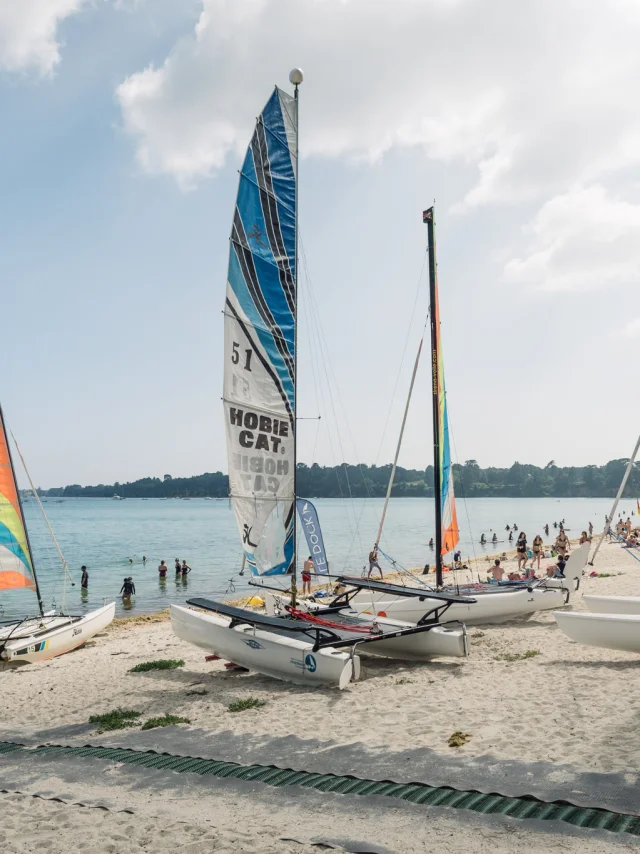Understanding the TidesWelcome to a world ruled by the ocean!
In Fouesnant-les Glénan, the sea is a daily companion. Whether you want to fish on foot, sail or simply stroll along the foreshore, it’s essential to understand the phenomenon of the tides.
The spectacle of the tides
The tides sculpt the landscape: dunes, foreshore, mudflats, rocks and sandbanks change their appearance as the day goes by. Enjoy the unique light of Fouesnant-les Glénan at sunrise or sunset, when the sea plays with the reflections of the sky.
- How do the tides work?
Tides are regular movements of rising (high tide) and falling (low tide) sea level, mainly due to the gravitational pull exerted by the Moon and Sun on the oceans.
What you need to know
The entire cycle lasts around 12 hours 25 minutes, with a high tide approximately every 6 hours 12 minutes.
In Fouesnant, as along the entire Atlantic coast, the tides are said to be semi-diurnal: two high tides and two low tides every 24 hours. - What is a spring tide?
Large tides, also known as spring tides, occur on the full and new moons, when the Sun, Moon and Earth are aligned.
Key facts
They offer high tidal coefficients (above 90, up to 120).
This is the best time for fishing on foot, but also the riskiest without preparation.
High tides also allow you to discover areas of the foreshore that are rarely accessible. - Tides and water sports
The tides have a major influence on :
- Pleasure boating.
- Trips to the Glénan archipelago.
- Kitesurfing and paddle boarding.
Ask at the Centre Nautique de Fouesnant Cornouaille in Cap-Coz about the ideal conditions according to tide times.



